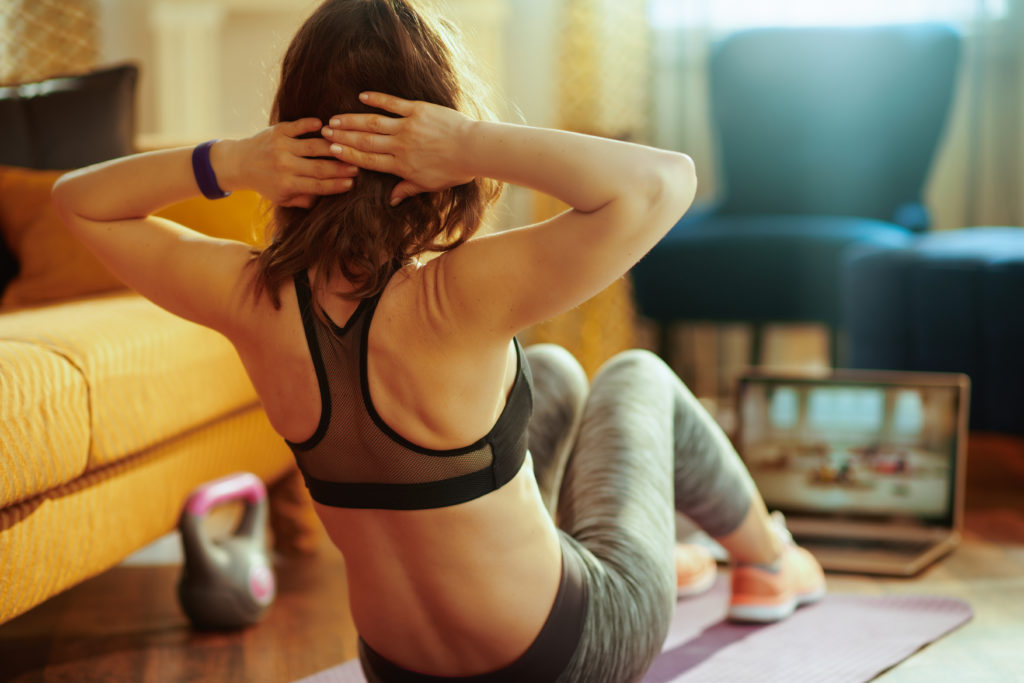Many of us hear about the importance of exercise for physical and mental health. But what if we don’t like to exercise? What if that word just makes us roll our eyes or want to give up? Merriam-Webster’s online dictionary defines exercise in a few ways: “Regular or repeated use of a faculty or bodily organ.” “bodily exertion for the sake of developing and maintaining physical fitness.” Exertion? Repeated? These words don’t exactly inspire all of us.
What if we looked at exercise in a different way? What if we changed the focus? All of us can move in some way or another. What if we focus on moving, on being physically active, in whatever way we are comfortable, enjoy or have the time to do?
The US Department of Health and Human Services (HHS) puts out Physical Activity Guidelines for Americans, which has great information and education regarding physical activity. The following has been taken from that.
WHY PHYSICAL ACTIVITY IS IMPORTANT
Movement through physical activity helps us feel better, function better, sleep better and reduce the risk of many chronic diseases. Health benefits start immediately after we begin regularly moving, and even short episodes of physical activity are beneficial. Even better, research shows that just about everyone gains benefits: men and women of all races and ethnicities, young children to older adults, women who are pregnant or postpartum (first year after delivery), those of us living with a chronic condition or a disability, and those of us who want to reduce their risk of chronic disease. The evidence about the health benefits of regular physical activity is well established, and research continues to provide insight into what works to get people moving, both at the individual and community levels.
HEALTH BENEFITS OF MOVEMENT
Research demonstrates that participating in regular moderate-to-vigorous physical activity provides many health benefits. Some benefits of physical activity can be achieved immediately, such as reduced feelings of anxiety, reduced blood pressure, and improvements in sleep, some aspects of cognitive function, and insulin sensitivity. Other benefits, such as increased cardiorespiratory fitness, increased muscular strength, decreases in depressive symptoms, and sustained reduction in blood pressure, require a few weeks or months of participation in moving through physical activity. Physical activity can also slow or delay the progression of chronic diseases, such as hypertension and type 2 diabetes. Benefits persist with continued physical activity.
The health benefits of physical activity are seen in children and adolescents, young and middle-aged adults, older adults, women and men, people of different races and ethnicities, and people with chronic conditions or disabilities. The health benefits of physical activity are generally independent of body weight. Adults of all sizes and shapes gain health and fitness benefits by being habitually physically active. The benefits of physical activity also outweigh the risk of injury and heart attacks, two concerns that may prevent people from becoming physically active.
WHAT COUNTS AS MOVEMENT
Physical activity can be divided into 3 different intensities:
- Light-intensity activity is walking at a slow or leisurely pace (2 mph or less), paddling in a pool, digging in the garden, cooking activities, or light household chores. Think of being on your feet and doing some movement or activity.
- Moderate-intensity activity includes walking briskly (2.5 to 4 mph), playing doubles tennis, or raking the yard. Think of a quick walk with your dog or with your family, building a snow fort, or swimming with friends.
- Vigorous-intensity activity includes jogging, running, carrying heavy groceries or other loads upstairs, shoveling snow, or participating in a strenuous fitness class. Think of swimming laps, cross country skiing or large household repairs.
We need to think about these levels of movements and think about how much time we participate in these types of activities.
Next week: How much is enough? How to get started.
References:
Merriam-Webster. (2020). Retrieved from: https://www.merriam-webster.com/dictionary/exercise
Physical activity guidelines for Americans. 2nd edition. (2018). U.S. Department of Health and Human Services. Retrieved from: https://health.gov/sites/default/files/2019-09/Physical_Activity_Guidelines_2nd_edition.pdf
Submitted by Katesel Strimbeck PT, MS, MHA. Katesel has been a PT for 22 years, she is Director of Rehabilitation Services at North Country Hospital, and a member of the American Physical Therapy Association.


